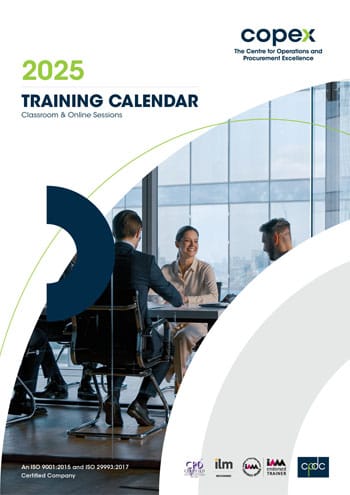
Designing Customer-Centric Marketing Campaigns
4 mins readIn today’s hyper-competitive marketplace, customer expectations have shifted dramatically. No longer are businesses simply selling products or services—they’re delivering experiences. At the core of this transformation lies customer-centric marketing: a strategic approach that puts the customer’s needs, preferences, and behaviors at the center of every marketing decision.
Customer-centric marketing campaigns not only boost customer satisfaction but also drive loyalty, enhance brand reputation, and increase revenue. This article provides a comprehensive guide to designing such campaigns, with practical strategies and internal links to Copex Training’s expert-led courses, including Creating a Marketing Plan for Business-to-Business Training and Developing & Implementing Strategic Marketing Plans Course.
Understanding the Shift to Customer-Centric Marketing
Traditional marketing focuses on products, features, and company capabilities. In contrast, customer-centric marketing starts with understanding the customer. It requires deep insights into:
- Customer pain points
- Behavioral data and buying patterns
- Communication preferences
- Emotional motivators and decision-making drivers
The best customer-centric marketing campaigns leverage these insights to create messaging and offers that resonate with real human needs. This requires a shift in mindset—from selling to solving.
The course Effective Business-to-Business (B2B) Marketing explores how B2B organizations can apply this customer-first philosophy in highly technical or solution-based industries.
Step 1: Defining and Understanding Your Target Customer
A campaign cannot be customer-centric unless you know who your customer is. This involves building detailed customer personas using:
- Demographics (age, industry, job role, etc.)
- Psychographics (values, challenges, goals)
- Behavior patterns (online activity, content engagement)
- Purchase motivations and objections
Use customer feedback, CRM data, surveys, and interviews to validate your assumptions. Look beyond surface-level data to uncover emotional and contextual drivers.
Creating a Marketing Plan for Business-to-Business offers hands-on training on mapping customer personas and aligning them with B2B campaign objectives.
Step 2: Mapping the Customer Journey
Customer-centric campaigns are most effective when they target the right stage of the customer journey. This typically includes:
- Awareness – The customer becomes aware of a problem.
- Consideration – They evaluate potential solutions.
- Decision – They choose a provider or partner.
- Post-Purchase – They seek validation, support, or advocacy.
Each stage requires unique content, messaging, and touchpoints. For example, a blog post may be ideal for the awareness stage, while a product demo or client testimonial may influence decision-making.
In the Developing & Implementing Strategic Marketing Plans course, professionals learn how to design full-funnel strategies that connect each touchpoint with customer intent.
Step 3: Using Data to Drive Personalization
Customers expect personalization—but that doesn’t just mean adding their name to an email. True personalization uses data to tailor:
- Product recommendations
- Campaign messaging
- Timing and delivery of communications
- Channel selection
Marketers should leverage data from past purchases, website behavior, email engagement, and even AI-driven predictions. This data-first approach ensures each campaign segment feels tailored and relevant.
Sales alignment is critical here. The Sales and Operation Planning (S&OP) course bridges marketing and sales functions to ensure that campaign design aligns with real-world sales insights and forecasts.
Step 4: Crafting Value-Driven Messaging
Messaging is the bridge between your solution and the customer’s needs. Effective messaging:
- Speaks directly to customer pain points
- Highlights outcomes over features
- Uses the language of the customer
- Builds trust through authenticity and relevance
Customer-centric messaging should feel like a conversation, not a broadcast. It should position your brand as a trusted advisor, not just a vendor.
The Best Way to Win Business and Protect Profit Margins Course explores how customer-focused communication increases win rates without sacrificing pricing integrity.
Step 5: Choosing the Right Channels
A customer-centric campaign meets the customer where they are—not where it’s most convenient for the business. Consider:
- Industry-specific platforms (e.g., LinkedIn for B2B)
- Mobile vs. desktop behavior
- Email frequency preferences
- Online vs. offline integration
Multi-channel strategies improve engagement, but consistency is key. Use the same tone, messaging, and offers across all touchpoints to reinforce brand trust.
Courses like Effective Business-to-Business (B2B) Marketing Course address channel strategies specific to long-cycle sales environments.
Step 6: Creating Emotional Resonance
Emotion drives decisions—even in B2B. Campaigns that connect emotionally are more likely to convert. Use storytelling, empathy, and visual content to:
- Humanize your brand
- Demonstrate real-world impact
- Evoke positive associations (trust, innovation, safety, success)
Even highly analytical buyers want to feel confident and validated in their choices. Emotional storytelling complements logic with inspiration.
This balance is taught in Creating a Marketing Plan for Business-to-Business Course, helping teams build rational and emotional appeal.
Step 7: Aligning with Sales and Operational Capabilities
Customer-centric marketing doesn’t exist in a vacuum. It must align with:
- Product availability
- Service capacity
- Sales processes
- Pricing structures
Collaboration between marketing, sales, and operations ensures campaigns are realistic and sustainable. If marketing promises rapid onboarding but operations are overwhelmed, trust is broken.
Sales and Operation Planning (S&OP) builds this alignment through demand forecasting, integrated planning, and sales enablement.
Step 8: Testing, Measuring, and Iterating
No campaign is perfect from the start. Customer-centric campaigns rely on continuous improvement. Use:
- A/B testing for headlines, CTAs, and design
- Surveys and feedback tools to gather real-time customer input
- Campaign analytics to track performance across segments
Look beyond vanity metrics (likes, impressions) to analyze:
- Conversion rates by customer segment
- Campaign-attributed revenue
- Lifetime value improvements
Iteration builds insight. Over time, you’ll learn what drives engagement and retention across diverse customer profiles.
Overcoming Challenges in Customer-Centric Campaigns
Challenge 1: Lack of Customer Insight
Solution: Invest in research and training. Internal interviews, customer surveys, CRM data analysis, and customer service feedback are goldmines for understanding your audience.
Challenge 2: Siloed Departments
Solution: Foster cross-functional planning. Courses like Sales and Operation Planning (S&OP) Course are designed to break down silos and align stakeholders around shared goals.
Challenge 3: Scaling Personalization
Solution: Use automation tools paired with smart segmentation. Email platforms, CRM systems, and AI can deliver personalized experiences at scale when informed by a solid data strategy.
Case Study: B2B Software Firm Launch
A mid-sized B2B software company was preparing to launch a new product. Instead of a traditional feature-focused campaign, the marketing team developed customer personas and mapped the buyer journey.
They created campaign content tailored to each persona and journey stage—from awareness blogs to decision-stage demos. The campaign was delivered through email, LinkedIn, and sales outreach, all coordinated through shared S&OP meetings.
Result: The launch achieved a 35% increase in qualified leads and a 25% faster sales cycle—clear proof that customer-centricity drives ROI.
Customer-Centricity Is Not a Trend—It’s the Future
Designing customer-centric marketing campaigns is no longer optional—it’s a competitive necessity. Brands that listen, adapt, and deliver what their customers truly need are the ones that win trust, loyalty, and market share.
For professionals ready to master this approach, Copex Training offers comprehensive solutions. Enroll in courses like Creating a Marketing Plan for Business-to-Business Course, Developing & Implementing Strategic Marketing Plans Course, and Sales and Operation Planning (S&OP) Course to elevate your skills and lead the shift toward a more customer-driven future.




